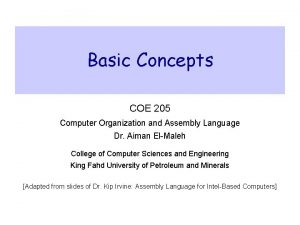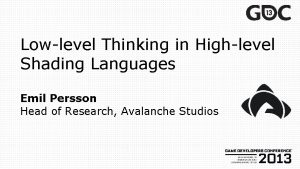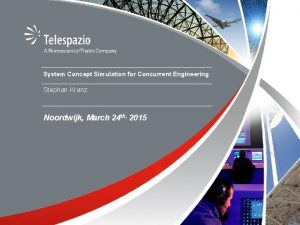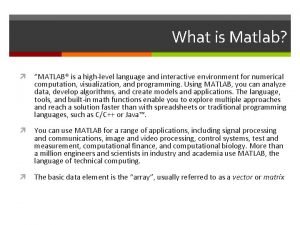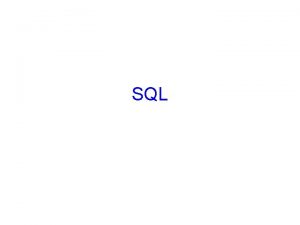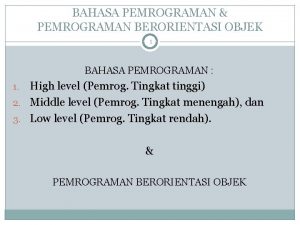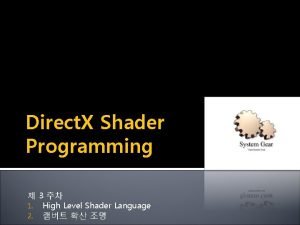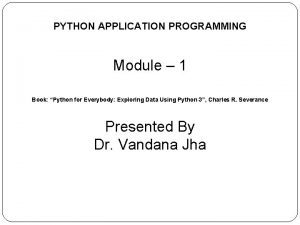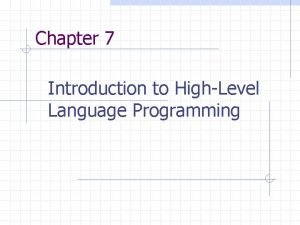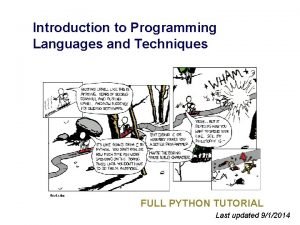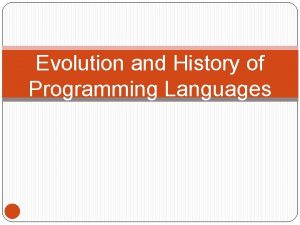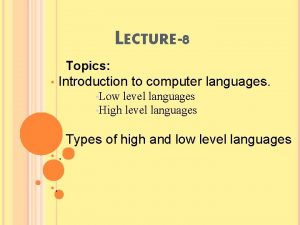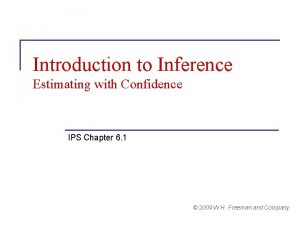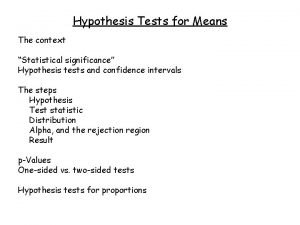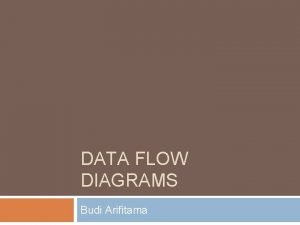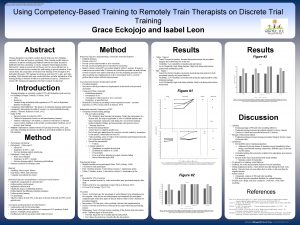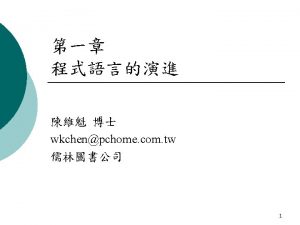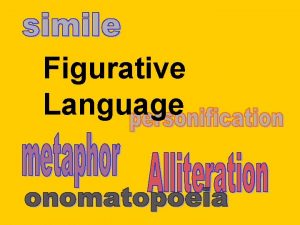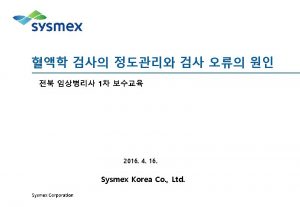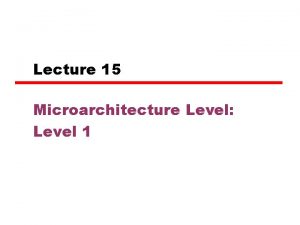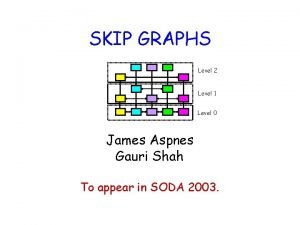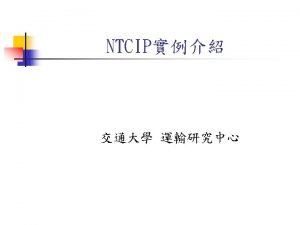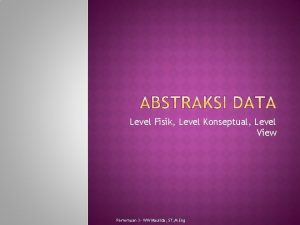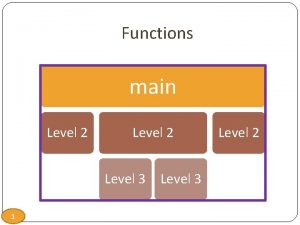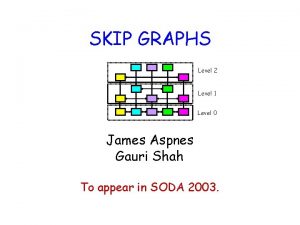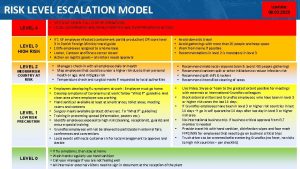Use of a High Level Language in High
























- Slides: 24

Use of a High Level Language in High Performance Biomechanics Simulations Katherine Yelick, Armando Solar-Lezama, Jimmy Su, Dan Bonachea, Amir Kamil U. C. Berkeley and LBNL Collaborators: S. Graham, P. Hilfinger, P. Colella, K. Datta, E. Givelberg, N. Mai, T. Wen, C. Bell, P. Hargrove, J. Duell, C. Iancu, W. Chen, P. Husbands, M. Welcome, R. Nishtala

A New World for Computing From Hennessy and Patterson, Computer Architecture: A Quantitative Approach, 4 th edition, 2006 Sea change in chip design: multiple “cores” or processors per chip from IBM, Sun, AMD, Intel today • VAX : 25% per year 1978 to 1986 • RISC + x 86: 52% per year 1986 to 2002 • RISC + x 86: 18% per year 2002 to present Slide Source: Dave Patterson

Why Is the Computer Industry Worried? • For 20 years, hardware designers have taken care of performance • Now they will produce only parallel processors – Double number of cores every 18 -24 months – Uniprocessor performance relatively flat Performance is a software problem All software will be parallel • Programming options: – Libraries: Open. MP (scalabililty? ), MPI (usability? ) – Languages: parallel C, Fortran, Java, Matlab

Titanium: High Level Language for Scientific Computing • Titanium is an object-oriented language based on Java • Additional languages support – – Multidimensional arrays Value classes (Complex type) Fast memory management Scalable parallelism model with locality • Implementation strategy – Titanium compiler translates Titanium to C with calls to communication library (GASNet), no JVM – Portable across machines with C compilers – Cross language calls to C/F/MPI possible Joint work with Titanium group

Titanium Arrays Operations • Titanium arrays have a rich set of operations translate restrict slice (n dim to n-1) • None of these modify the original array, they just create another view of the data in that array • Iterate over an array without worrying about bounds – Bounds checking done to prevent errors (can be turned off) Rect. Domain<2> r = [0: 0, 11: 11]; double [2 d] a = new double [r]; double [2 d] b = new double [1: 1, 10: 10]; foreach (p in b. domain()) { b[p] = 2. 0*a[p]; }

Titanium Small Object Example • Support for small objects, like Complex – In Java these would be objects (not built-in) • Extra indirection, poor memory locality – Titanium immutable classes are for small objects • No indirection is used; like C structs • Overloading is available for convenience immutable class Complex { private double real; private double imag; public Complex(double r, double i) { real = r; imag = i; } public Complex op+(Complex c) { return new Complex(c. real + real, c. imag + imag); }

Titanium Templates • Many applications use containers: – Parameterized by dimensions, element types, … – Java supports parameterization through inheritance • Inefficient for small parameter types • Titanium provides a template mechanism closer to C++ – Instantiated with objects and non-object types (double, Complex) • Example: template <class Element> class Stack {. . . public Element pop() {. . . } public void push( Element arrival ) {. . . } } ___________________________ template Stack<int> list = new template Stack<int>(); list. push( 1 );

Partitioned Global Address Space Global address space • Global address space: any thread/process may directly read/write data allocated by another • Partitioned: data is designated as local (near) or global (possibly far); programmer controls layout x: 1 y: x: 5 y: l: l: g: g: p 0 p 1 x: 7 y: 0 By default: • Object heaps are shared • Program stacks are private pn • Besides Titanium, Unified Parallel C and Co-Array Fortran use this parallelism model Joint work with Titanium group

Arrays in a Global Address Space • Key features of Titanium arrays – Generality: indices may start/end any point – Domain calculus allow for slicing, subarray, transpose and other operations without data copies (F 90 arrays and more) • Domain calculus to identify boundaries and iterate: foreach (p in grid. A. shrink(1). domain()). . . • Array copies automatically work on intersection grid. B. copy(grid. A. shrink(1)); intersection (copied area) “restricted” (non-ghost) cells ghost cells Joint work with Titanium group grid. A grid. B Useful in grid -based computations

Immersed Boundaries in Biomechanics • Fluid flow within the body is one of the major challenges, e. g. , – – Blood through the heart Coagulation of platelets in clots Effect of sounds waves on the inner ear Movement of bacteria • A key problem is modeling an elastic structure immersed in a fluid – Irregular moving boundaries – Wide range of scales – Vary by structure, connectivity, viscosity, external forced, internally-generated forces, etc.

Software Architecture Source: www. psc. org Heart (Titanium) Cochlea (Titanium+C) … Flagellate Swimming Generic Immersed Boundary Method (Titanium) Spectral (Titanium + FFTW) Multigrid (Titanium) Application Models Extensible Simulation AMR Solvers existing components • Can add new models by extending material points • Can add new Navier-Stokes solvers

Immersed Boundary Method 1. Compute the force f the immersed material applies to the fluid. 2. Compute the force applied to the fluid grid: 3. Solve the Navier-Stokes equations: 4. Move the material:

Immersed Boundary Method Structure 4 steps in each timestep Material Points 1. Material activation & force calculation 4. Interpolate & Interaction move material Fluid Lattice 2 D Dirac Delta Function 3. Navier-Stokes Solver 2. Spread Force

Challenges to Parallelization • Irregular material points need to interact with regular fluid lattice – Efficient “scatter-gather” across processors • Placement of materials across processors – Locality: store material points with underlying fluid and with nearby material points – Load balance: distribute points evenly • Scalable fluid solver – Currently based on 3 D FFT – Communication optimized using overlap (not yet in full IB code)

Improving Communication Performance 1: Material Interaction • Communication within a material can be high – E. g. , spring force law in heart fibers to contract – Instead, replicate point; uses linearity in spread communication P 2 P 1 redundant work P 2 P 1 • Use graph partitioning (Metis) materials – Improve locality in interaction – Nearby points on same proc • Take advantage of hierarchical machines – Shared memory “nodes” within network on

(up is good) Improving Communication Performance 2: Use Lightweight Communication GASNet excels at small to mid-range sizes

Improving Communication Performance 3: Fast FFTs with overlapped communication . 5 Tflop/s size/procs network • Better performance in GASNet version than MPI • This code is in UPC, not Titanium; not yet in full IB code

Immersed Boundary Parallel Scaling 20 04 dat ao np lan es • ½ the code size of the serial/vector Fortran version • 1 sec/timestep 1 day per simulation (heart/cochlea)


Use of Adaptive Mesh Refinement • Adaptive Mesh Refinement (AMR) – Improves scalability – Fine mesh only where needed • Ph. D thesis by Boyce Griffith at NYU for use in the heart – Uses of PETSc and SAMRAI in parallel implementation • AMR in Titanium – IB code is not yet adaptive – Separate study on AMR in Titanium Image source: B. Griffith, http: //www. math. nyu. edu/~griffith/

Adaptive Mesh Refinement in Titanium C++/Fortran/MPI AMR • Chombo package from LBNL • Bulk-synchronous comm: – Pack boundary data between procs • • Titanium AMR Entirely in Titanium Finer-grained communication – No explicit pack/unpack code – Automated in runtime system Code Size in Lines C++/F/MPI Titanium AMR data Structures 35000 2000 AMR operations 6500 1200 Elliptic PDE solver 4200* 1500 * Somewhat more functionality in PDE part of Chombo code 10 X reduction in lines of code!

Performance of Titanium AMR Comparable parallel performance • Serial: Titanium is within a few % of C++/F; sometimes faster! • Parallel: Titanium scaling is comparable with generic optimizations - optimizations (SMP-aware) that are not in MPI code - additional optimizations (namely overlap) not yet implemented Joint work with Tong Wen, Jimmy Su, Phil Colella

Towards a Higher Level Language • Domain-specific language for particle-mesh computations • Basic language concepts and use – Particle, Mesh (1 d, 2 d, 3 d), Particle group User Input Program Synthesizer Parallel Titanium Compiler Machine – Optimizer re-uses communication information (schedule) and overlaps communcation • Results on simple test case Time (ms) Base Re-use + Overlap 8. 7 6. 5

Conclusions • All software will soon be parallel – End of the single processor scaling era • Titanium is a high level parallel language – – Support for scientific computing High performance and scalable Highly portable across serial / parallel machines Download: http: //titanium. cs. berkeley. edu • Immersed boundary method framework – – Designed for extensibility Demonstrations on heart and cochlea simulations Some optimizations done in compiler / runtime Contact: {jimmysu, yelick}@cs. berkeley. edu
 Difference between assembly language and machine language
Difference between assembly language and machine language Low-level thinking in high-level shading languages
Low-level thinking in high-level shading languages High level use cases
High level use cases High level use cases
High level use cases Matlab high level language
Matlab high level language Is sql high level language
Is sql high level language Karakteristik pemrograman berorientasi objek
Karakteristik pemrograman berorientasi objek Shader graph 사용법
Shader graph 사용법 Advantages of application software
Advantages of application software Why python is high level language
Why python is high level language Language
Language Xkcd programming languages
Xkcd programming languages Interpreter and compiler difference between
Interpreter and compiler difference between Low level languages
Low level languages A level english language language change
A level english language language change Molecular level vs cellular level
Molecular level vs cellular level Isis protocol
Isis protocol Significance level vs confidence level
Significance level vs confidence level Isis level 1 vs level 2
Isis level 1 vs level 2 Confidence level and significance level
Confidence level and significance level Confidence level and significance level
Confidence level and significance level Level 0 dfd diagram
Level 0 dfd diagram Security level 0
Security level 0 Question
Question Thread-level parallelism
Thread-level parallelism
